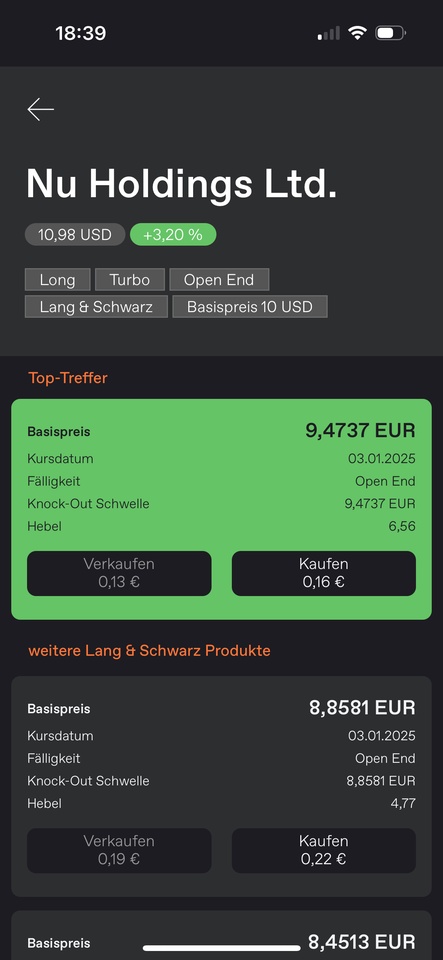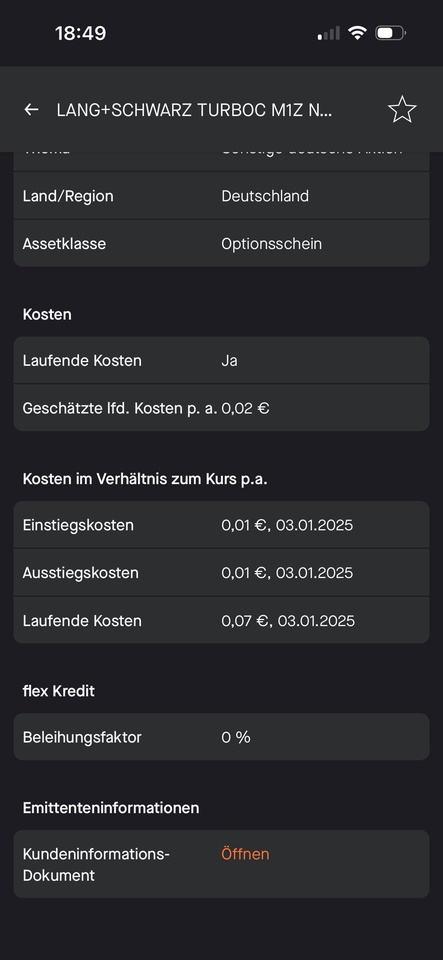Question of understanding:
Dear community, since there is not really a sample portfolio at flatex, or you can test this without losing money 😁, can someone explain the mechanics to me ?
Using the example of $NU (+0,49 %) when will I be undocked ? When does the bill expire?
Assuming I now buy 10,000 shares at 0.16 = 1,600.00 euros, how much of a loss do I have to make for it to become worthless?
Is the strike price equal to the knock-out threshold? Or do I have to start from the USD 10.98 (about 10.65 euros) and at -11 % the bill expires ?
Perhaps someone here has some experience, learning by doing could be quite expensive, especially as I am not yet sure how the costs will be affected ?
Maybe it's a display error because of the weekend? 😁
The explanatory videos from flatex are usually not helpful here.
Thanks in advance ✌️












